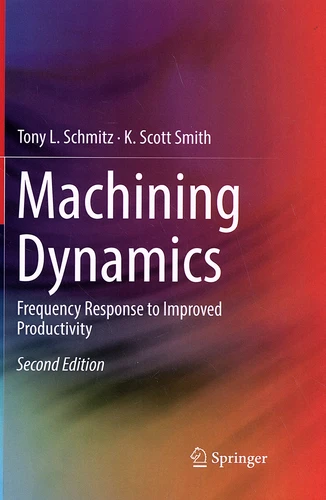Machining Dynamics. Frequency Response to Improved Productivity
2nd edition
Par : , Formats :
- Paiement en ligne :
- Livraison à domicile ou en point Mondial Relay indisponible
- Retrait Click and Collect en magasin gratuit
- Nombre de pages382
- PrésentationBroché
- FormatGrand Format
- Poids0.6 kg
- Dimensions15,5 cm × 23,5 cm × 2,2 cm
- ISBN978-3-030-06708-3
- EAN9783030067083
- Date de parution03/01/2019
- ÉditeurSpringer
Résumé
This book demonstrates the practical application of machining dynamics, with a particular focus on milling. The book walks readers through the steps required to improve machining productivity through chatter avoidance and reduced surface location error, and covers in detail topics such as modal analysis (including experimental methods) to obtain the tool point frequency response function, descriptions of turning.
and milling, force modeling, time domain simulation, stability lobe diagram algorithms, surface location error calculation for milling, beam theory, and more. This new edition includes updates to the whole text, new exercises and problems, and a new chapter on machining tribology. It is a valuable resource for practicing manufacturing engineers and graduate students interested in learning how to improve machining productivity through consideration of the process dynamics.
Provides comprehensive coverage of the fundamentals and machining dynamics with numerous examples. Includes functional MATLAB code for process predictions. Provides clear descriptions of predictive algorithms for machining process performance.
and milling, force modeling, time domain simulation, stability lobe diagram algorithms, surface location error calculation for milling, beam theory, and more. This new edition includes updates to the whole text, new exercises and problems, and a new chapter on machining tribology. It is a valuable resource for practicing manufacturing engineers and graduate students interested in learning how to improve machining productivity through consideration of the process dynamics.
Provides comprehensive coverage of the fundamentals and machining dynamics with numerous examples. Includes functional MATLAB code for process predictions. Provides clear descriptions of predictive algorithms for machining process performance.
This book demonstrates the practical application of machining dynamics, with a particular focus on milling. The book walks readers through the steps required to improve machining productivity through chatter avoidance and reduced surface location error, and covers in detail topics such as modal analysis (including experimental methods) to obtain the tool point frequency response function, descriptions of turning.
and milling, force modeling, time domain simulation, stability lobe diagram algorithms, surface location error calculation for milling, beam theory, and more. This new edition includes updates to the whole text, new exercises and problems, and a new chapter on machining tribology. It is a valuable resource for practicing manufacturing engineers and graduate students interested in learning how to improve machining productivity through consideration of the process dynamics.
Provides comprehensive coverage of the fundamentals and machining dynamics with numerous examples. Includes functional MATLAB code for process predictions. Provides clear descriptions of predictive algorithms for machining process performance.
and milling, force modeling, time domain simulation, stability lobe diagram algorithms, surface location error calculation for milling, beam theory, and more. This new edition includes updates to the whole text, new exercises and problems, and a new chapter on machining tribology. It is a valuable resource for practicing manufacturing engineers and graduate students interested in learning how to improve machining productivity through consideration of the process dynamics.
Provides comprehensive coverage of the fundamentals and machining dynamics with numerous examples. Includes functional MATLAB code for process predictions. Provides clear descriptions of predictive algorithms for machining process performance.



